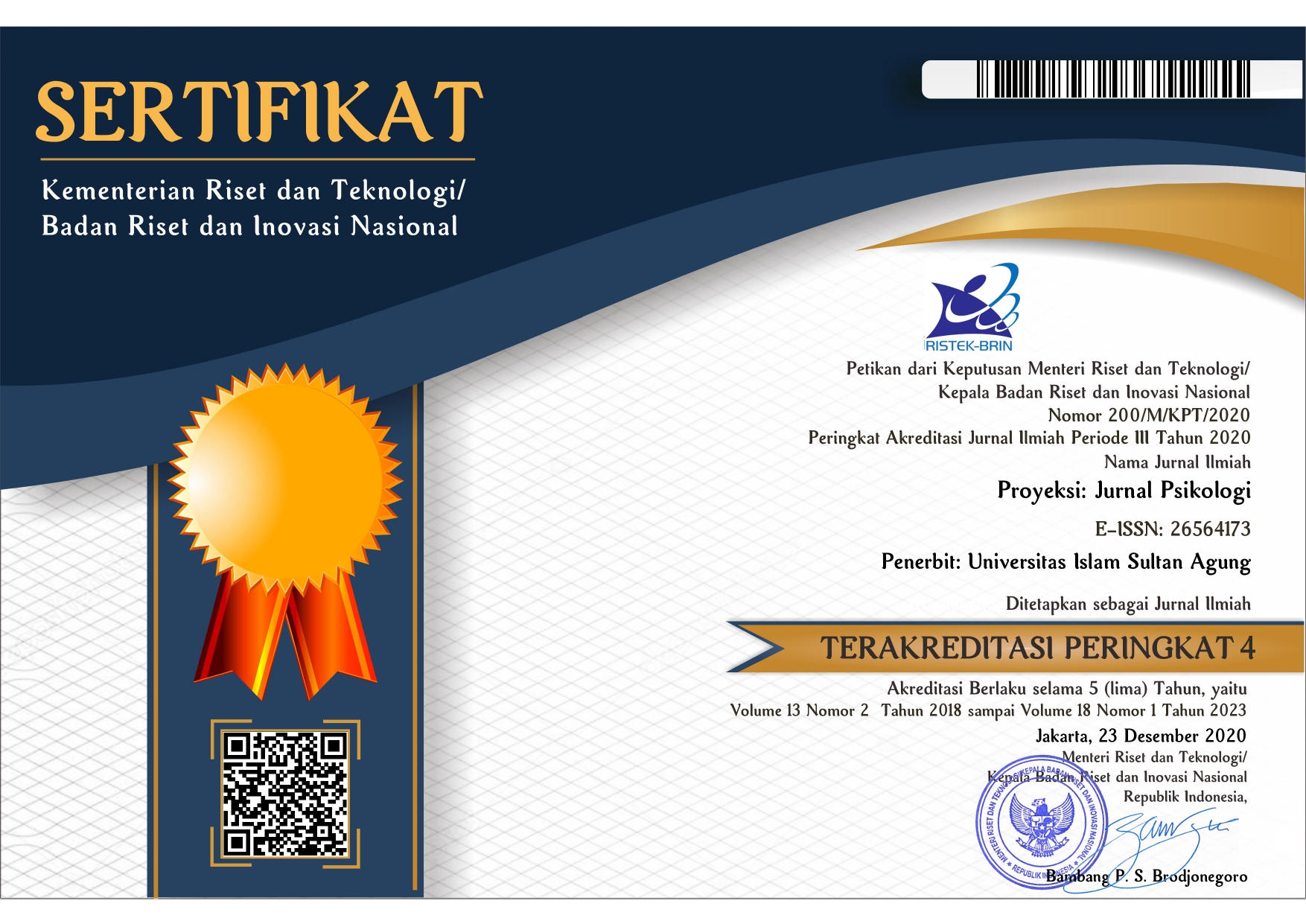KEPRIBADIAN, GAYA BERPIKIR, GAYA PEMECAHAN MASALAH, DAN GAYA PENGAMBILAN KEPUTUSAN
Abstract
Keywords
Full Text:
PDFReferences
Bolhari, Hamidreza., & Tara Dasmah. (2012). Personality preferences: Are Learners and Teachers at Loggerheads? Procedia-Social and Behavioral Science, 70(2013), hlm.1636-1640.
Brown, D. (2002). Career Choice and Development. John Wiley & Sons.
Crawdford, Stephine Y., Suhail K. Alhreish., & Nicholas G. Popovich. (2012). Comparison of Learning Styles of Pharmacy Students and Faculty Members. American Journal of Pharmaceutical Education. 76(10) 192.
Dr. Vineeta. (2014) Thinking Styles of Adolescence in Relation to Their Personality Types. Journal of Humanities and Social Sciences, 19(11) Ver. VI, hlm. 43-47.
Gregorc, A. F. (1982). An Adult's Guide to Style. Columbia, Conn: Gregorc Associates.
Gregorc. (1999). Diakses dari http://gregorc.com/ tanggal 17 Mei 2016.
Gregroc, A. F. (1979). Learning/teaching styles: Potent forces behind them. Educational Leadership, 36(4), hlm. 234-236.
Groves, K., Vance, C., & Paik, Y. (2008). Linking Linear/Nonlinear Thinking Style Balance and Managerial Ethical Decision-Making. Journal of Business Ethics, 80(2), 305-325.
Harren, V.A., (1979). A Model of Career Decision Making For College Students. Journal of Vocational Behavior.
Hicks, M. J. (2004). Problem Solving and decision making: hard, soft, and creative approaches. Cengange Learning EMEA.
Hossein,. Etebarian,. & Zamani. (2013) The Relation between Employees’ Style of Thinking Styles and Decision-Making Styles. International Journal of Information Technology & Business Management. 15(1), hlm 152-161.
Isaksen, S. G., Dorval, K. B., and Treffinger, D. J. (1994).Creative Approaches to Problem Solving, Kendall-Hunt, Dubuque, IA.
Miller, D. C., & Byrnes, J. P. (2001). Adolescents' Decision Making in Social Situations: A Self-Regulation Perspective. Journal of Applied Developmental Psychology, 22(3), Pp: 237-256.
Morera, O. F., Maydeu-Olivares, A., Nygren, T. E., White, R. J., Fernandez, N. P., & Skewes, M. C. (2006). Social Problem Solving Predicts Decision Making Styles Among Us Hispanics. Personality and Individual Differences, 41(2), 307-317.
Myers, Isabel Briggs. (1998). Introduction to Type: A guide to Understanding Your Results on The MBTI Instrument. CPP, Inc. Mountain View California.
Scott, S.G. And Bruce, R.A. (1995). Decision-Making Style: The Development and Assessment of A New Measure. Educational and Psychological Measurement, Vol. 55 No. 5, Pp: 818-31.
Selby, E. C., Treffinger, D. J., Isaksen, S. G., & Lauer, K. J. (2004). Defining and Assessing Problemâ€Solving Style: Design And Development Of A New Tool. The Journal of Creative Behavior, 38(4), 221-243.
Selby, E. C., Treffinger, D. J., Isaksen, S. G., & Lauer, K. J. (2007). View: An Assessment of Problem Solving Style–Technical Manual.
Sternberg, R. J., & Zhang, L. F. (2005). Styles of Thinking as A Basis Of Differentiated Instruction. Theory into Practice, 44(3), 245-253.
Treffinger, D. J., Selby, E. C., & Isaksen, S. G. (2008). Understanding Individual Problem-Solving Style: A Key to Learning and Applying Creative Problem Solving. Learning and Individual Differences, 18(4), 390-401.
DOI: http://dx.doi.org/10.30659/jp.14.2.126-138
Refbacks
- There are currently no refbacks.

Proyeksi by http://jurnal.unissula.ac.id/index.php/proyeksi/ is licensed under a Creative Commons Attribution-ShareAlike 4.0 International License.

